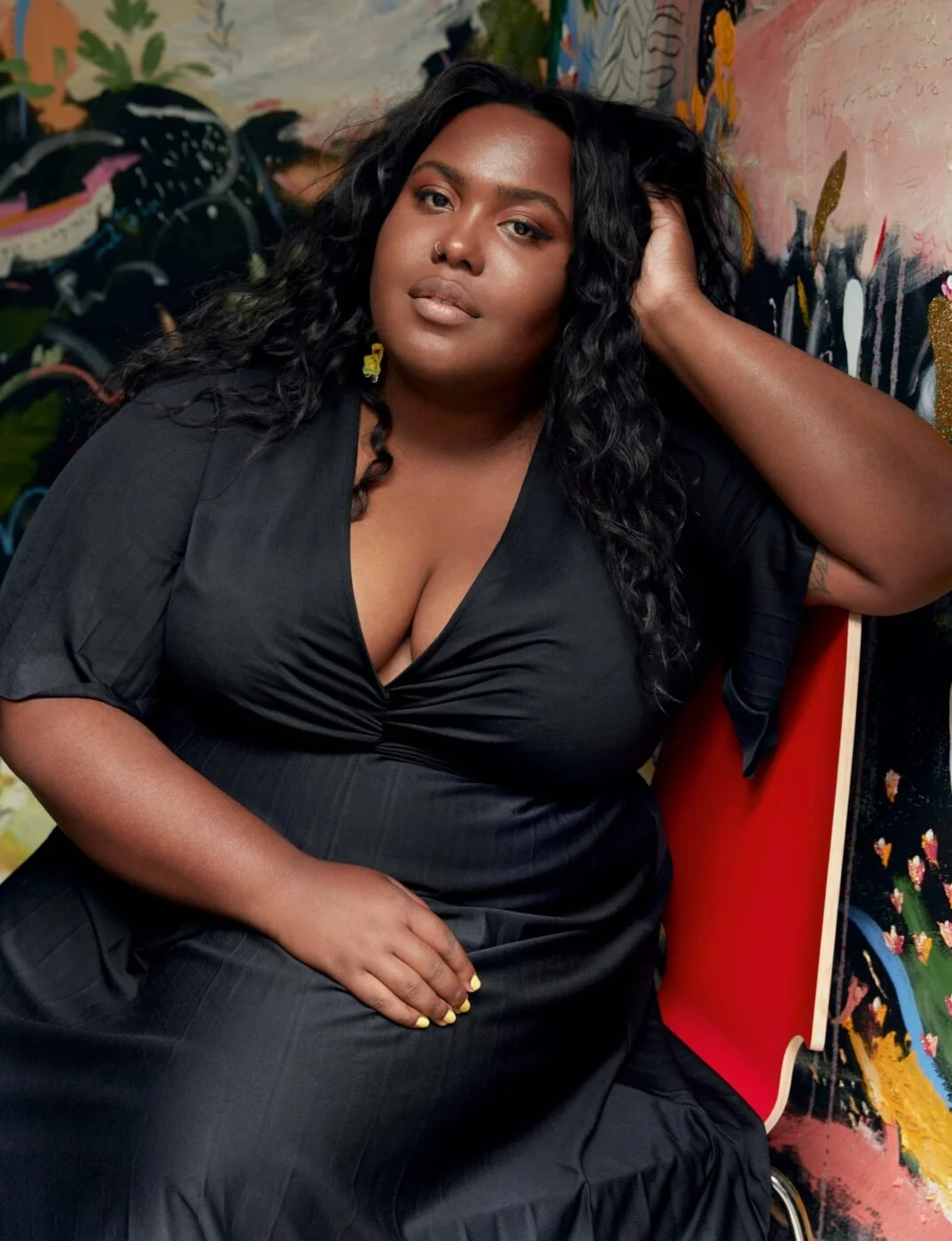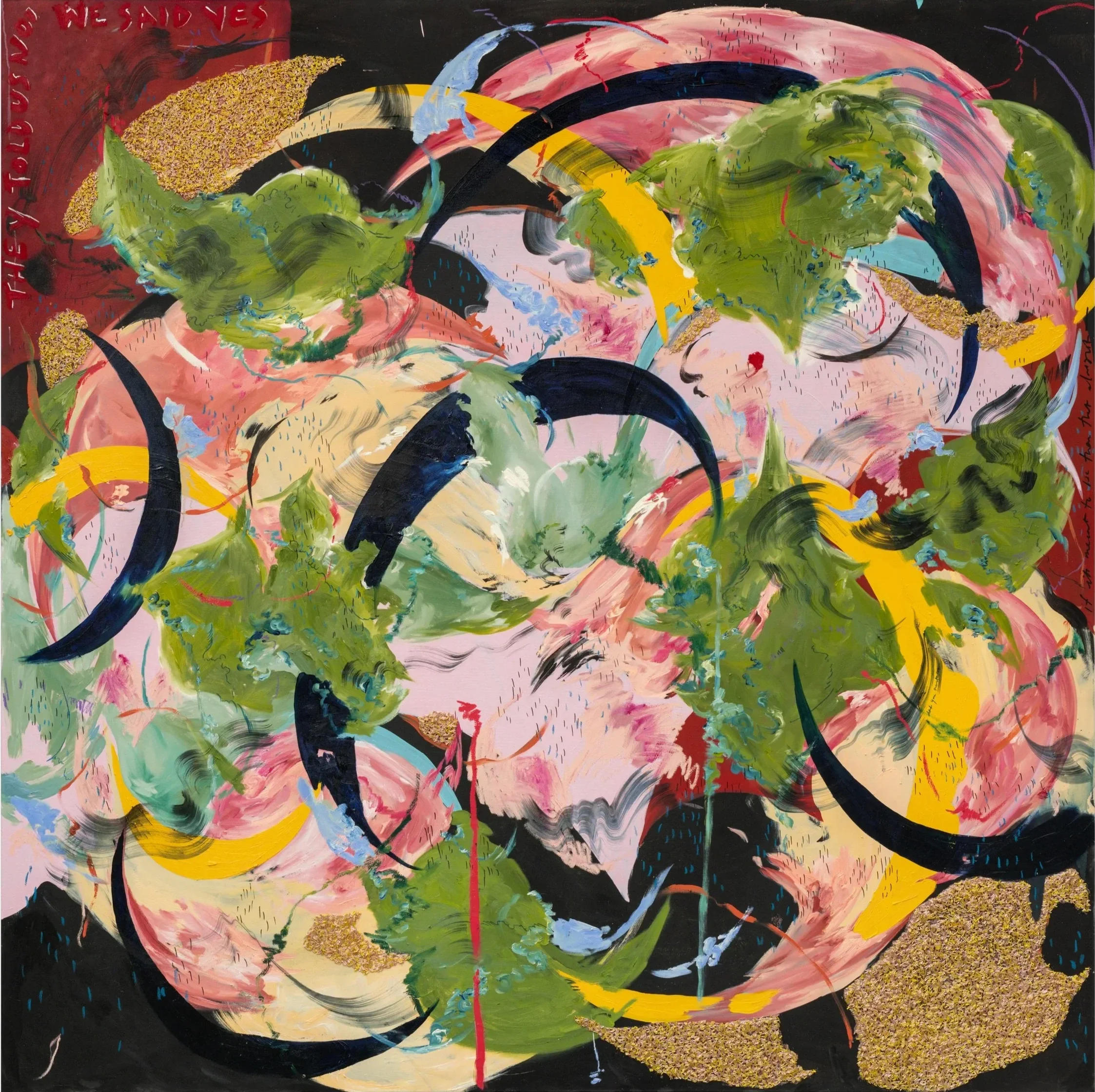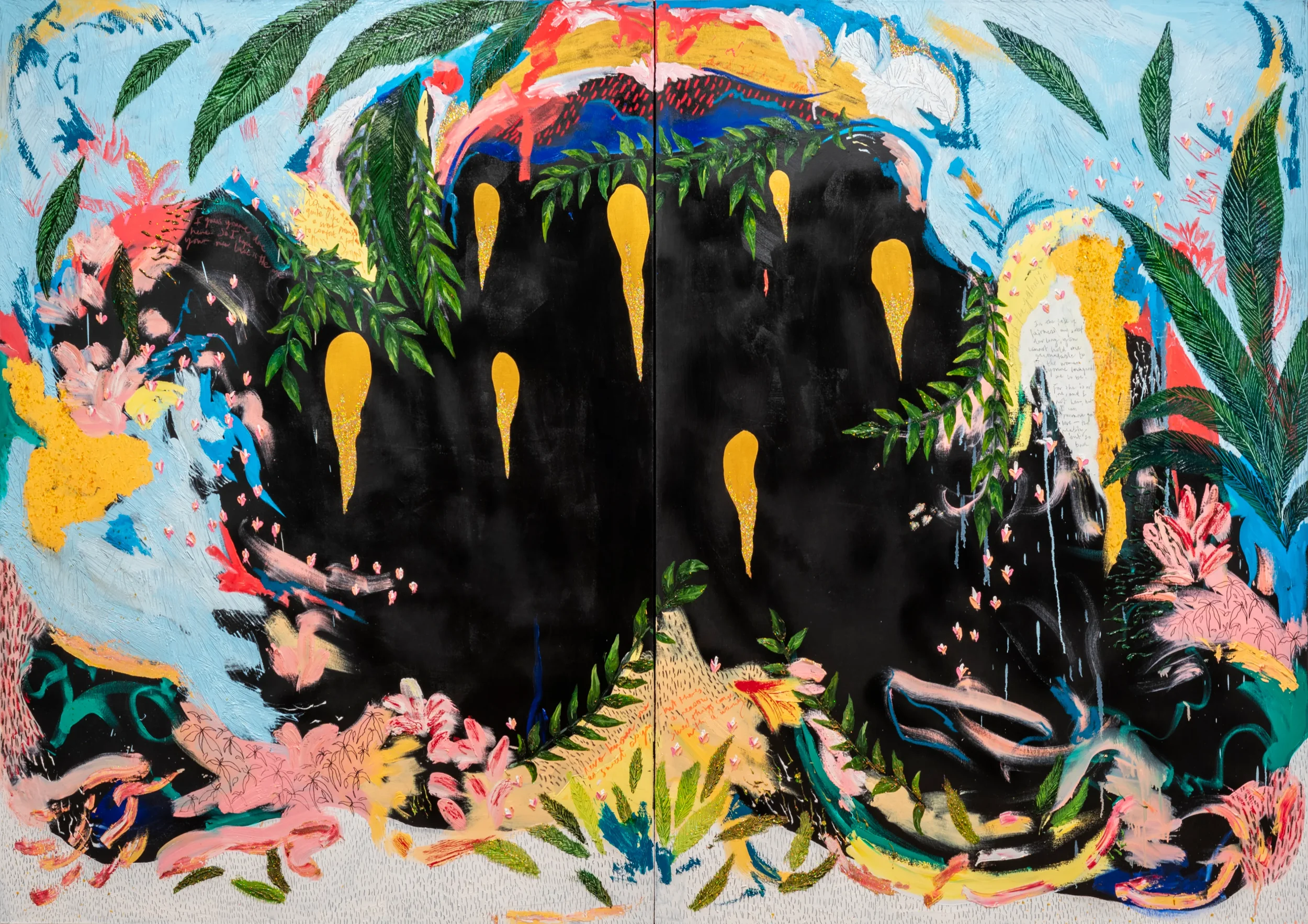
Michaela Yearwood-Dan
Her vibrant and luxurious style is underpinned by an expansive repertory of cultural signifiers, borrowing freely from millennial culture, blackness and feminism: texting, acrylic-nails, gold-hoops, carnival culture, and a lush, omnipresent flora which evokes seeding, propagation, growth and alludes to the intimate, infinite possibilities of a diaspora.
SELECTED EXHIBITIONS:
Tiwani Contemporary (2019), One English Pound, Sarabande, The Lee Alexander McQueen Foundation (2019); New Contemporaries, Baltic, Gateshead and Block 336, London (2018); After Cesaire/Morden Tropiques, Platform Southwark, London (2018).
EDUCATION:
BA in Fine Art Painting at the University of Brighton.
Yearwood-Dan lives and works in London.
She is a contemporary British artist who depicts her observations of society and self in her art. Creating predominately with paint and collage, Yearwood-Dan’s works are thick and sumptuous with references to both the origins of traditional Fine Art and pop culture. There is a strong focuses on method and technique, often borrowing and adapting traits from western, Japanese and Chinese historical painting and craft.
“In moving away from figurative work, I felt like I was shedding this external layer of having to speak on behalf of a wider group – of being a woman, being black, being queer – all those other personas that I embody. By removing myself from this figurative context, which facilitates the continued commodification of the black figure, I was able to create work that felt more honest to me in terms of what I enjoyed making.
Interview:
Typically, when we discuss representation, we’re often focused on aesthetics: who we are seeing, what we are seeing and what it looks like, rather than perhaps a more introspective type of representation. My work doesn’t show my figure or the black figure; it doesn’t show women in that kind of figurative context; it doesn’t show spaces and scenes and landscapes. Those subjects are not present in any direct way. But integrating my practice within a larger context of abstract art and deviating from the ‘norm’ is in itself the manifestation of a different kind of artist, a different kind of figurative mould that the artist is meant to inhabit.
My use of text also contributes to developing this different type of self-representation. Text imbues this biographical energy in the work which I think is more personal and intimate. The words I use do not necessarily feature in the pieces themselves. They are not often the most articulate, well-formed prose. Quite often, they’re colloquialisms, slang, or song lyrics. Bringing them into my paintings, then, feels like introducing a non-elite or non-traditional fine art way of existing through language, both visual and literal.”




